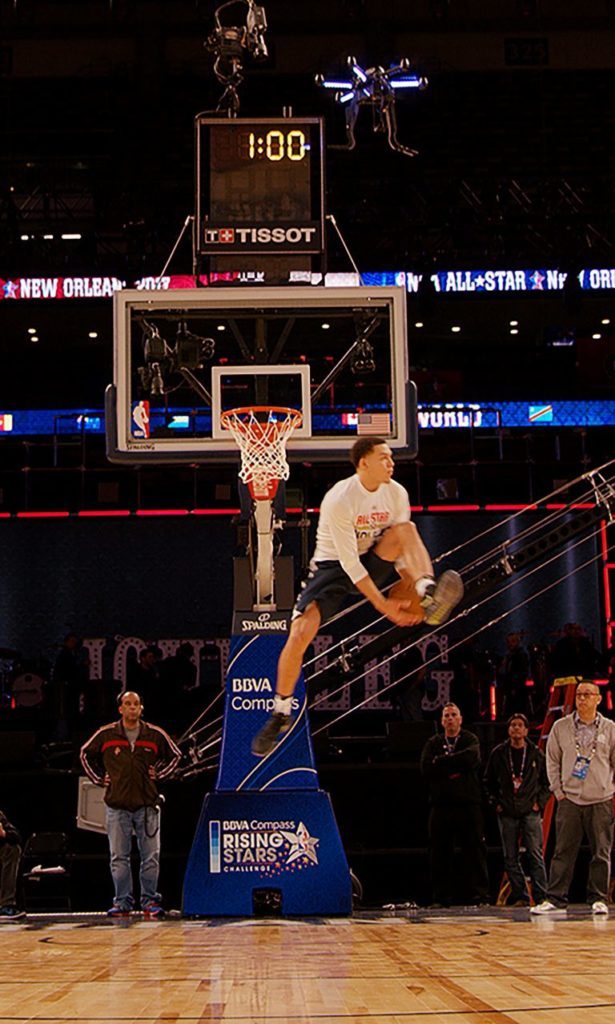Is there any sporting contest that Intel can’t improve with the help of drone technology?
A matter of days after an Intel-powered swarm of drones performed a light show above the Super Bowl, a custom Intel drone has featured in the Verizon Slam Dunk Contest. The contest was part of the 2017 NBA All-Star Weekend in New Orleans, and Aaron Gordon completed his drone-assisted dunk in style.
https://www.youtube.com/watch?v=4doNNlL1ycM
“When Aaron Gordon approached Intel with the idea to complete the first-ever drone assisted slam dunk, we couldn’t wait to support him in his quest,” said Anil Nanduri, vice president of Intel’s Drone Segment. “Intel is leading and committed to bringing new capabilities and innovations to the drone ecosystem, so obviously our team saw this as an opportunity to do just that. Our goal as a brand is to use technology to create amazing experiences and I can think of no better way to prove that than by working with Aaron on this historic dunk attempt.”
The drone used in the 2017 Verizon Slam Dunk is a ‘fully-redundant’ hexacopter. Intel says that it’s resistant to any single point of failure. It has a flight time of up to 26 minutes, weighs just under than 11 pounds and can carry a payload of up to 4.4 pounds.
After analyzing payload and flight time requirements, a custom claw was built out of carbon fiber and milled to match the frame of the Intel drone. In total the project took two months to fully develop, test and complete in time for the dunk contest.
There was a span of time where the dunk contest got watered down because people weren’t very creative or were very gimmicky,” said Gordon before the contest. “To me originality is key. I want to be able to do something that no one has ever seen before.” – Aaron Gordon, Orlando Magic forward.
Curious how @Double0AG delivered that jaw-dropping #drone dunk @ the #VerizonDunk contest? #ExperienceMore at https://t.co/LZvhnoh9JG pic.twitter.com/lTWf4tcDv8
— Intel (@intel) February 19, 2017
“You can’t see it, but three stacks of microcontrollers and the Intel Curie module help power this beast,” said pilot Austin Smith. His team ensured the drone was equipped with powerful communications capabilities, so much so that the drone’s claw can be controlled from more than a mile away – just in case.
Intel has quietly been becoming one of the most influential companies in the drone industry. Its Real Sense module powers Yuneec’s obstacle avoidance technology, while it also owns Movidius, the startup responsible for the visual sensing processor used in the DJI Phantom 4.
Malek Murison is a freelance writer and editor with a passion for tech trends and innovation. He handles product reviews, major releases and keeps an eye on the enthusiast market for DroneLife.
Email Malek
Twitter:@malekmurison
Subscribe to DroneLife here.
